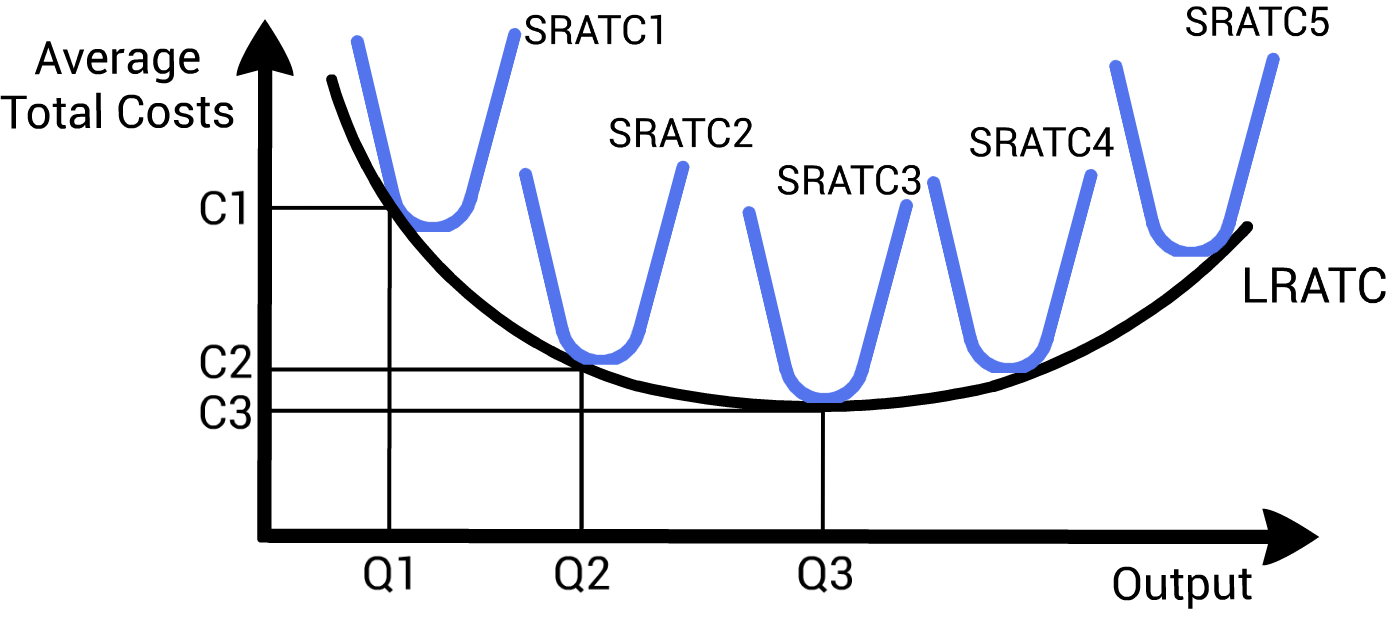
Long Run Scale
With an understanding of these curves, firms are better equipped to determine whether to take on high fixed costs or low fixed costs. If you don’t expect to produce a lot of goods, you wouldn’t take on high fixed costs.
In the long run, where all costs are variable, there’s also something called the long run average cost curve (LRAC). It’s a set of points that minimize the average total cost for each level of output built from a series of short run ATC curves.
Source: Elevise
Notice how it models the minimum short run average total cost at EACH quantity.
Another long run concept is the idea of economies of scale, which means that LRATC decreases as output increases. Think of how a large chain like Stop & Shop is able to buy wholesale goods in bulk, negotiating cheaper prices and thus lowering variable costs in the long run when compared to your local deli. Diseconomies of scale occurs when LRATC increases with output. Constant returns to scale is simply when LRATC remains constant with output increasing. Remember, returns to scale is a long run concept; diminishing returns is a short run concept.
